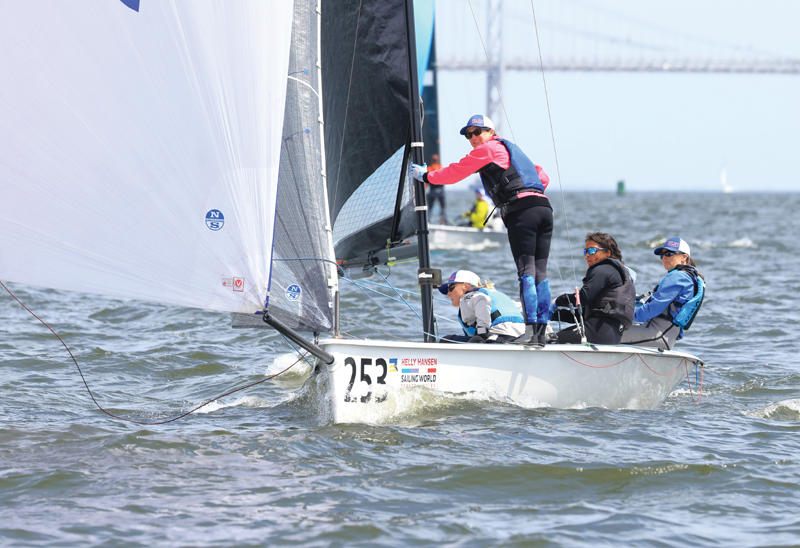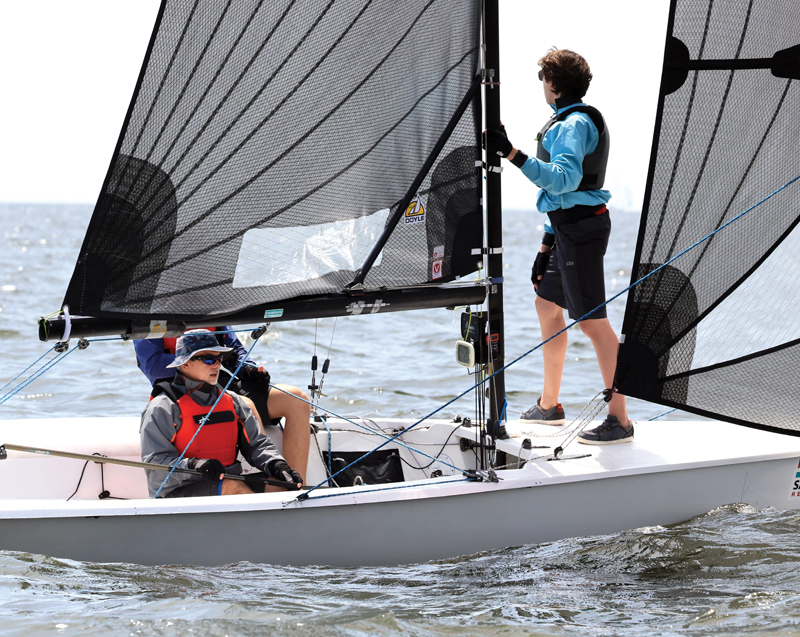Stand up straight! No slouching!
Whoever thought that Aunt Ellen's nagging could help your sailing?

As a sailing athlete who’s no longer, well, one of the young guns, of course I spend time working on strength, endurance, and flexibility. I’m also being careful to take care of my body and to focus on recovery, too. That’s how I found myself in a painful in a super good way deep-tissue massage session, where my therapist was working on some hamstring issues that have been plaguing my running. But as I lay face-down on the table, she noticed something else: She could tell from the way my upper spine settled at rest that I likely wasn’t focusing on my posture. (Happily, I am not suffering from “tech neck!”)
I walked out of that session not only with more effective and responsive hamstrings, but with a commitment to myself to be more cognizant of my posture. Because it’s been on my mind, I’ve noticed a bunch of ways that better posture can support better sailboat racing.

It Helps Your Sailing
You know how a few minutes before the start you’ll stand up to get a good view of the racecourse, helping you to decide which side of the course you’d like to play on the first beat? Key words there are “stand up.” Getting taller gives you a better view and lets you see farther. If you want to have a more expansive view at that point, doesn’t it follow that you’d always like to have a bigger view? Being taller essentially expands the horizon of the area you can monitor for puffs, shifts, and more. This gives you additional information on which to base your decisions. And more information is a good thing!
The few extra inches that not slouching can give you really can make a difference. This is especially true if you are sailing a singlehanded or minimally handed boat, when you’re not able to designate a crew member to keep an eye out for puffs. The multitasking crew, or perhaps the skipper as the only sailor onboard, will pick up more wind info by being a little taller.
Extra height also helps you move the boat more effectively through the waves. If you’re hiking out and working the boat up and down by shifting your weight forward and aft, you’re essentially using your legs/butt area on the boat as a fulcrum and your upper body as the lever. And the longer your lever, the more effectively you can act on that fulcrum.
Downwind, if you’re driving, you are mostly sitting upright—but sometimes you do need to go shoulders out to apply a little torque. Of course, while reaching you’ll do that more often. Upwind, hiking with posture is definitely harder. Focus on building core strength (abs and back) to make that work better.
It Helps Your Body (which, in turn, helps your sailing)
Your spine is intended to have a gentle “S” curve in it. This gives you both flexibility and support. These soft curves effectively distribute mechanical stress as you go about your daily business. But put yourself into unique positions, and your body will run into some challenges. Dinghy sailing is outstanding at doing this.
For example, hiking upwind, the tendency for the thoracic section of your spine (the middle-ish bit) is to bend the opposite way from how it was designed to function for upright walking folks. A day of that puts a lot of pressure on your spine and the muscles that support it, leading to stiffness and pain. And that can certainly inhibit both your ability to repeat those movements—and your motivation to do so—in multiple-day regattas.
Another thing that slouching and hunching your shoulders does is to limit the amount of space available for your lungs to expand into. Sitting down, try slouching and rolling your shoulders forward, and then take a deep breath. Not super deep, right? Now change your posture, rolling your shoulder blades back and reaching the top of your head toward the sky. Take that deep breath again—much bigger, yes? In an athletic sport like dinghy sailing, you need to be able to use your lungs at full capacity. Limiting their potential use limits your endurance, strength, and brain power.
I’m not willing to give away any of my potential! So, if you see me slacking off, please remind me: No slouching!
by Kim Couranz
About the Author: SpinSheet Small Boat columnist for more than a dozen years, Kim Couranz has earned several national and world titles in Laser Radials (ILCA 6), Snipes, and Lightnings. She has also raced J/22s, J/24s, and Ynglings on an international level.




